Celestial Petroglyphs and Chimpanzees in Space
A PEEK INTO THE NEW MEXICO SPACE TRAIL
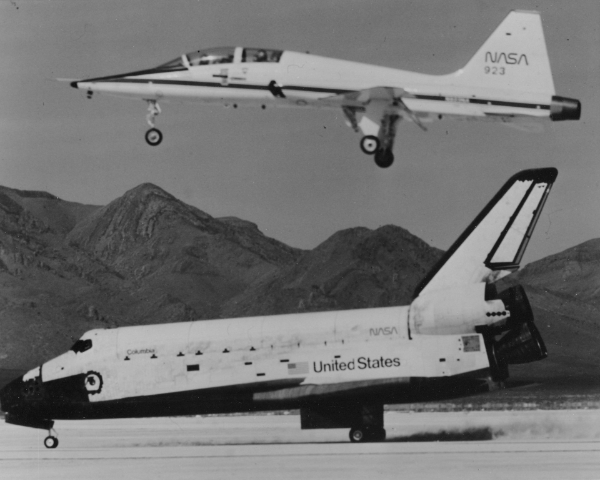 The only space shuttle to ever land in New Mexico, Columbia touched down on the gypsum surface of Northrup Strip at White Sands Missile Range on March 30, 1982. The strip was renamed White Sands Space Harbor two months later. Photograph courtesy of NASA.
The only space shuttle to ever land in New Mexico, Columbia touched down on the gypsum surface of Northrup Strip at White Sands Missile Range on March 30, 1982. The strip was renamed White Sands Space Harbor two months later. Photograph courtesy of NASA.
By Cathy Harper and Michael Shinabery
More than twenty years later, the Space Trail continues to evolve as unknown sites are added that tickle the adventurous fancy of travelers from near and far. A link on the New Mexico Museum of Space History’s website takes curiosity seekers to a statewide map marking fifty two sites across the Land of Enchantment, and each is directly related to space research, exploration, and development. It includes archeoastronomy sites like Chaco Canyon and Wizard’s Roost to present-day facilities such as Spaceport America.
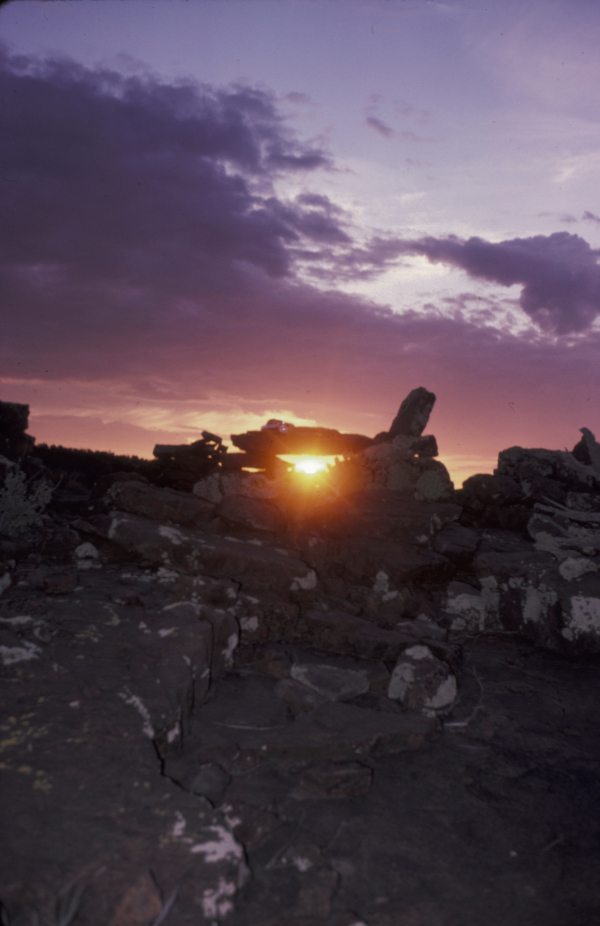
Prehistoric observations in New Mexico, like those shown in the sand paintings of the Navajo or the petroglyphs of the Zuni, allowed ancient Native Americans to predict seasonal changes to plan and implement the agricultural and religious events of their lives. The rock alignments at Wizard’s Roost in the Sacramento Mountains, built between 100 BCE. and CE 900, were used as a calendar, like the much larger site of Stonehenge. The Crab Nebula supernova in 1054 is thought to be depicted in a pictograph created by the Ancestral Puebloan culture in Chaco Canyon. Ancient Indigenous peoples across the globe depended on their knowledge of the stars to plot their courses, plant their seeds, and harvest their crops. Some of these archeoastronomy sites—like the Scholle petroglyph and Wally’s Dome—are closed to the public to protect them, while others such as Chaco Canyon and the Three Rivers Petroglyph Site, are open to explore.
In 1598, the Spaniards who trekked the El Camino Real blazed a trail not only across New Mexico but also to the future, as their path crossed what is now the home of Spaceport America. In 1945, the United States Army seized 2,671,000 acres of ranching land in southern New Mexico that would become known as White Sands Missile Range—the “Birthplace of America’s Missile and Space Activity.”
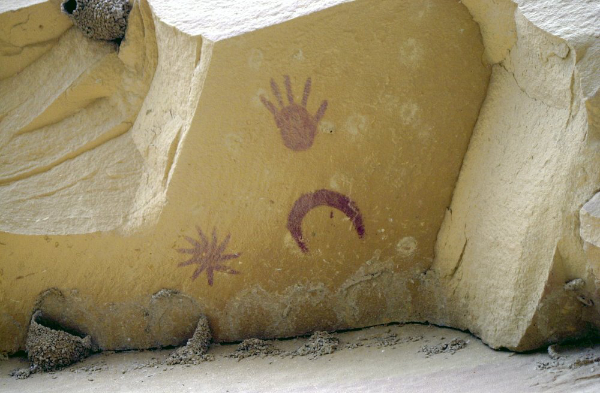
In the early 1930s and into the ’40s, American inventor Robert H. Goddard conducted research in Roswell. Funded by the Daniel and Florence Guggenheim Foundation, Goddard and his small staff pioneered many of the techniques used in today’s rockets. Goddard and his crew made major strides in rocket propulsion, as well as the practical matters of launch control, stabilization, tracking, and recovery. Visitors today can get a look at his laboratory at the Roswell Museum of Art, where an accurate full-scale reproduction is on display.
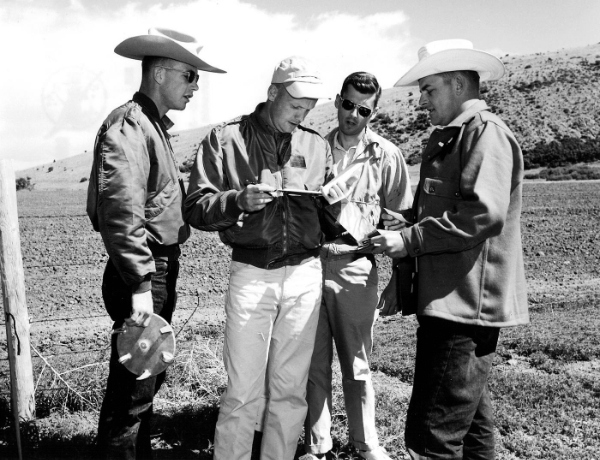
World War II brought many changes to New Mexico, where the wide-open spaces offered many opportunities for the military. In 1942, the Alamogordo Bombing and Gunnery Range opened (now Holloman Air Force Base). On April 18, 1951, an Aerobee rocket launched from Holloman Air Force Base carried its first animal payload, the monkey Albert V. Unfortunately, his parachute failed on return. Six months later, a Rhesus monkey and eleven mice became the first to be recovered alive. The second flight was the first success in a program of research that led to manned space travel.
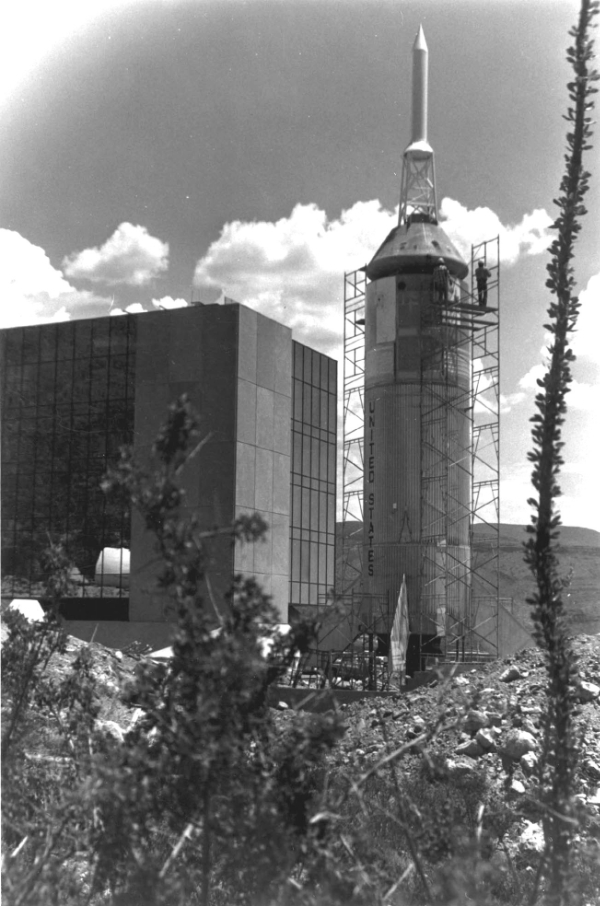
At Holloman’s High Speed Test Track on December 10, 1954, another space pioneer—Dr. John Paul Stapp—rode the Sonic Wind I rocket sled to a speed of 632 miles per hour. This test was to measure human response to sudden deceleration. As the sled hit the water brake, Dr. Stapp sustained 43 Gs, and experienced the same effects as a pilot ejecting from an aircraft traveling at 1,000 miles per hour at 35,000 feet. This test, along with others done at Holloman and other bases, resulted in improved safety belts in airplane cockpits and passenger seating. Dr. Stapp’s ride earned him the nickname the “fastest man on Earth.” Fun fact: for a time, seat belts were called “Stapp Straps.”
Before human pilots rode the Mercury spacecraft into space, animal passengers verified the adequacy of the capsule’s life support system. Because of their size and physical similarity to humans, chimpanzees were used. Eight chimpanzees participated in the Mercury Animal Test Program; two of them flew into space. The first chimpanzees in space, Ham and Enos, received their training at the Aeromedical Research Laboratory at Holloman Air Force Base. Ham, whose name is an acronym for the lab, is buried under the flagpoles at the New Mexico Museum of Space History.
New Mexico has frequently been the site for astronaut selection and training activities. The first groups of astronauts underwent medical screening at the Lovelace Clinic in Albuquerque, as did the women of Mercury 13. The clinic was founded in 1947 by William Randolph “Randy” Lovelace II, a native New Mexican. In 1959, a group of Lovelace Clinic aviation medicine experts put thirty one of the original astronaut candidates through a week of medical exams. On April 9, 1959, those who responded best to all the tests were introduced to the world as the Mercury Seven, America’s initial astronauts.
Apollo astronauts received geological training during field trips to sites in the Land of Enchantment. In the mid-1960s, astronauts found the Zuni Salt Lake’s near lunar landscape an excellent place to train. Later, astronauts from Apollo 15 and 16 honed their Lunar Rover driving skills across the rugged landscape of the Rio Grande Gorge area.
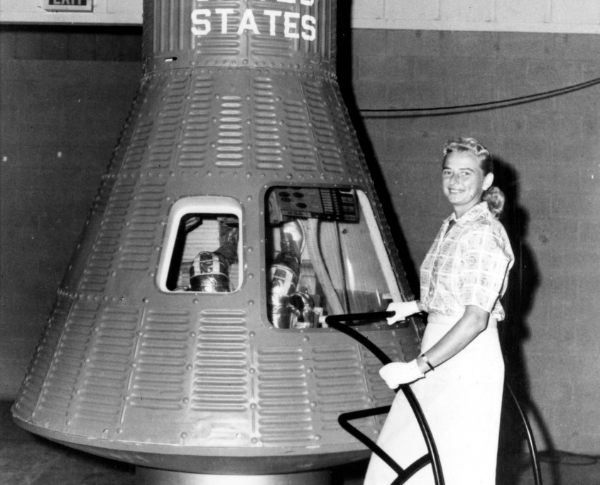

Space Shuttle pilots practiced landing approaches at White Sands Space Harbor (formerly Northrup Strip) on the White Sands Missile Range. White Sands Space Harbor was an alternate landing site for the Space Shuttle and is the chosen landing site for today’s Boeing Starliner, which is designed to transport crew to the International Space Station.
The National Radio Astronomy Observatory, a facility of the National Science Foundation near Magdalena, is the home of the Very Large Array (VLA). Many stars emit electromagnetic radiation in the form of radio waves. The VLA consists of twenty eight dish-shaped antennae, each of which is eighty two feet in diameter and weighs 230 tons. They are linked to form a single large telescope, as each antenna collects incoming radio signals and sends them to a central location where astronomers combine these signals to make detailed pictures of extremely faint objects in space. The first antenna began operation in 1975, and the complex was formally opened in 1980. The VLA Visitor’s Center is open year-round.
Originally a “Z Division” of Los Alamos, Sandia National Laboratories has a long history of developing science-based technologies for the U.S. military, but space has always been included, and in 1997, Sandia-designed airbags enabled NASA’s Pathfinder to land safely on Mars. At Sandia, Los Alamos National Laboratory (LANL), and many other locations, military goals and space exploration often overlapped. Needing rockets for their own purposes, the military funded the research necessary to create and test them. Scientists took advantage of the opportunity to use these same rockets for exploration.
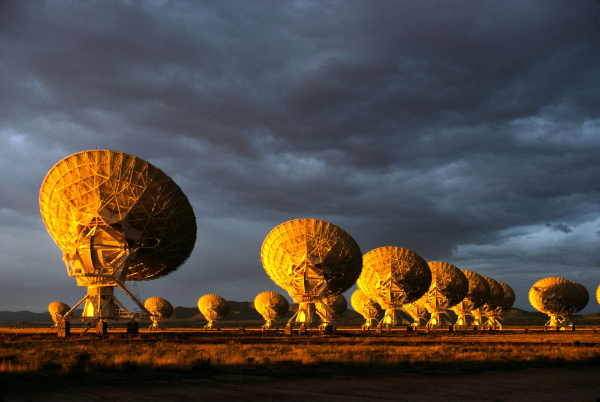
Los Alamos National Laboratory began in 1943 with the single purpose of designing and building an atomic bomb. Twenty-seven months later, the world’s first atomic bomb was detonated at Trinity Site, on the north end of White Sands Missile Range. The development of the atomic bomb brought the world into the atomic age. Research that began with military purposes spawned myriad private sector uses, from energy production on earth to powering trips to the edge of the solar system in spacecraft like the Viking and Galileo probes.
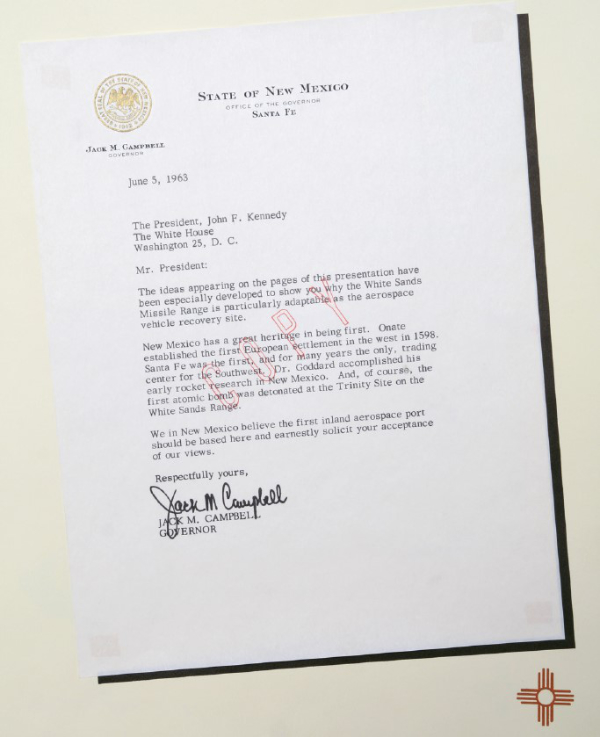
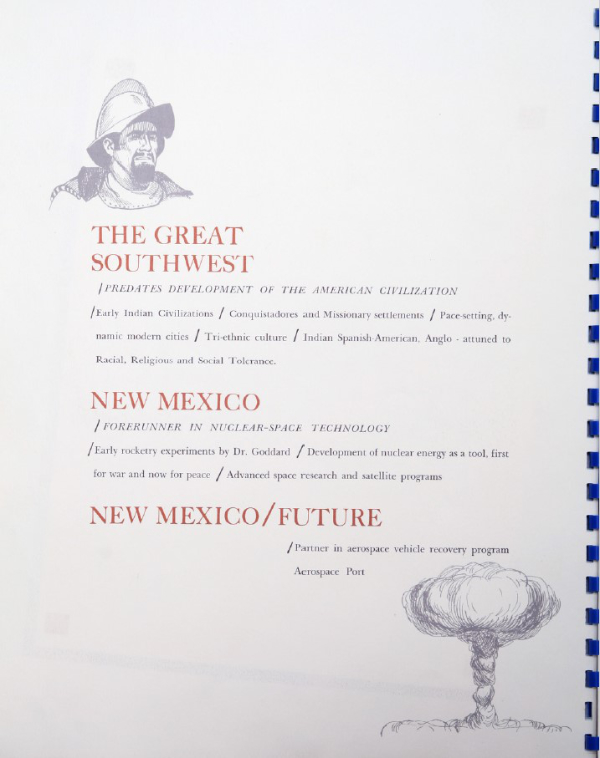
LANL also operates a small robotic observatory, Robotic Optical Transient Search Experiment (ROTSE), that in 1999 filmed a gamma-ray burst, the most luminous celestial object ever observed. In addition to this facility, Los Alamos maintains a system of robotic observatories called Rapid Telescopes for Optical Response (RAPTOR). The astronomical research facility system consists of six robotic observatories. The older RAPTOR telescopes, RAPTORs A, B, S, and P, each consist of a wide-field telescope and a narrow-field telescope. They are mounted on platforms that can swivel to any point in the sky in less than three seconds, making them the fastest-moving telescopes ever built.
Three hours southeast of Los Alamos, the NASA Balloon Facility near Fort Sumner, New Mexico, consists of a launch pad, take-off and landing strips, and two large hangars. Located in the Fort Sumner Municipal Airport, it is the main alternative base for stratospheric globe launching by NASA.
The New Mexico Office for Space Commercialization (NMOSC) was established in 1994 under Governor Bruce King to promote, coordinate, develop, and manage New Mexico’s regional spaceport program. There was a push at the time for the state to develop a spaceport in southern New Mexico—an initiative that could arguably have been started in 1963 when then-Governor Jack Campbell sent a proposal to President John F. Kennedy touting White Sands Missile Range as an aerospace recovery site and proposing that the state become the first inland “aerospace port.”
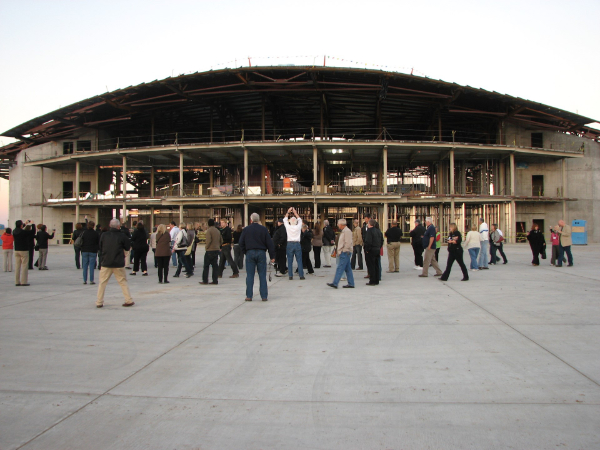
It wasn’t until many years later, under the leadership of then-Governor Bill Richardson, that the will to create a spaceport came about, and in October 2011, Spaceport America was declared officially open. Because anything worth having is worth waiting for, it was almost another decade before the first test flight of Virgin Galactic’s SpaceShipTwo from the world’s first purpose-built spaceport in May 2020, followed by its first private astronaut flight in June 2023. Virgin Galactic expects to launch at least one monthly commercial flight through the end of 2023, and plans to ramp that up as its fleet of spacecraft grows.
In New Mexico, space has been around for a long, long time. Space to grow, space to create, space to explore. The most unique thing that the New Mexico Space Trail offers to those adventurous enough to traverse its length is the rich historical and cultural legacy of a land that has enchanted for eons. When George House first envisioned the space trail, there were a mere twenty sites. Today there are fifty two, many of which represent locations that have more than one connection to space, like the many different types of research done at Los Alamos National Lab or the White Sands Test Facility. The common thread among these sites is the never-ending human curiosity for what lies beyond.
—
Cathy Harper grew up watching the moon launches during the Apollo era and has had a lifelong fascination with space travel. She currently serves as the Public Relations and Marketing Director at the New Mexico Museum of Space History.
Michael Shinabery grew up near Neil Armstrong’s hometown during the Space Race, which ignited his interest in space. In 2015 he flew two missions aboard NASA’s Stratospheric Observatory for Infrared Astronomy, and today is Education Director at the New Mexico Museum of Space History.
